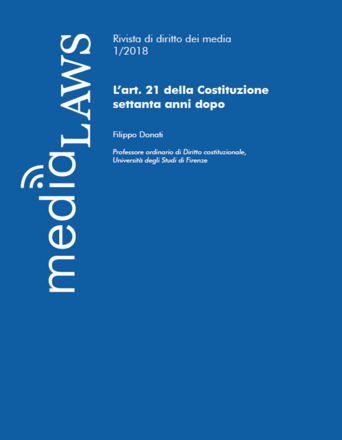
To explore the most significant legal challenges from a constitutional standpoint, this essay provides an overview of the driving forces behind the evolution of Italian media: from the entry into force of the Italian Constitution (1948) to the present day, with the rise of the Internet.
The author has identified four steps in Italian media history: the first, from 1948 to the half of the Seventies, primarily aimed at defining the aim of protection of freedom of expression as it was offered by art. 21 of the new Constitution; the second, between 1970 and 1980, during the onset of commercial TV, in which the importance of pluralism emerged; the third phase, characterized by the liberalization of telecommunications and a first opening of the national information system to European Union law; the fourth phase of the Internet era, where it is necessary to adapt the tools for protecting freedom of expression to a new technological context.
According to the author, currently there are two main priorities: firstly, since the Internet is an essential tool to exercise a large number of fundamental rights, everyone should have access to the internet (from this point of view public interventions are needed); secondly, it is essential to avoid filtering and blocking practices which may limit the free dissemination of information. In this light, the open and neutral nature of the internet is a necessary prerequisite to ensure media pluralism.
Tags: Italy Freedom of expression Media freedom Media pluralismThe content of this article can be used according to the terms of Creative Commons: Attribution-NonCommercial 4.0 International (CC BY-NC 4.0) . To do so use the the wording "this article was originally published on the Resource Centre on Media Freedom in Europe" including a direct active link to the original article page.

